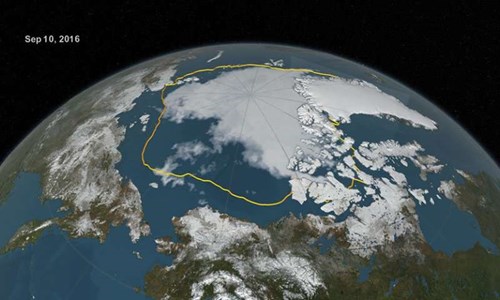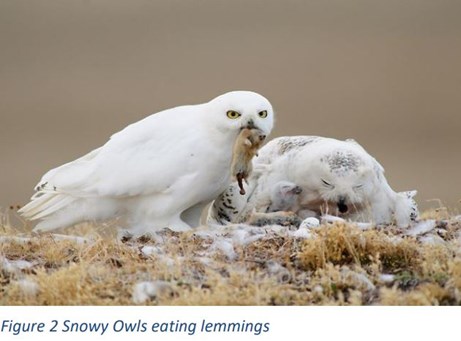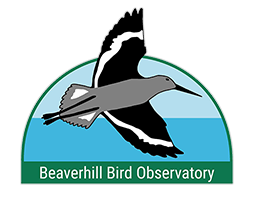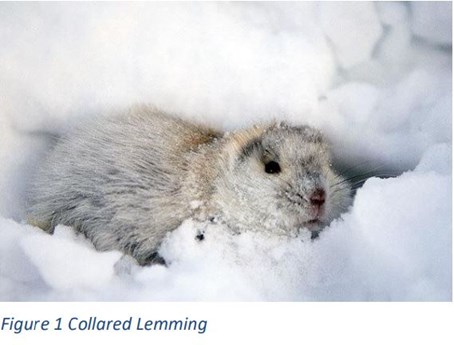Arctic Warming and Ecosystem Impacts
Monday, February 19, 2018The world is not warming evenly

By now, most of us have heard how climate change is slowly warming the earth. Overall, our planet is getting a bit warmer every decade. But did you know our planet is not warming up at an even rate? Although the average global temperature has increased by 0.6oC since the mid twentieth century, in the Arctic the average temperatures have increased by a whopping 2 oC! Being driven by a number of factors, this increase in temperature is mainly connected with the change in arctic sea ice. Each year, as temperatures continue to increase, more of the arctic sea ice is melting. Less bright white ice surfaces that help to reflect solar heat away from the earth means there is instead larger and darker open oceans, which more readily absorb solar heat. These warmer oceans are causing more ice to melt, which is causing a positive feedback loop. Since 1979, NASA has been monitoring and recording the arctic sea ice and they have reported a 13.2% decrease in sea ice per decade. Another way of putting it is in the last 38 years, we have lost over 2.20 million squared kilometers of arctic sea ice.
What’s the problem?
The increased temperatures in the Arctic are having serious impacts on lemming populations. Lemmings are small arctic rodents that live in tunnels under the snow during the winter months. These tunnels are often located close to the ground, where the warmth of the Earth helps to melt the snow and expose their food sources such as moss and other vegetation. Lemmings have cyclical population peaks every 3- 5 years and when a peak year occurs, their abundance creates a smorgasbord of food for all arctic predators to feast on.
Unfortunately, scientists in Scandinavia have not recorded a peak in lemming populations since 1994. In fact, they are seeing a decline in lemming populations and this has been directly linked with warming arctic temperatures. Instead of temperatures staying below freezing all winter long, arctic temperatures have been fluctuating above zero multiple times each year, causing melting and then refreezing to occur within the snowpack. This creates flooding events in the lemmings’ snow tunnels where many of them drown or freeze from hypothermia. Those able to escape and survive the flood will later return to their

tunnels only to find the water has frozen into a layer of ice, trapping their food resources underneath. Many of the remaining lemmings are now dying of starvation. The decline in lemming populations is having an impact on the entire arctic ecosystem. With fewer lemmings around to eat, predators such as the Snowy Owl are now forced to hunt other animals like Willow and Rock Ptarmigan, which are less abundant and require more energy to catch. This is making it more challenging for the Snowy Owls to successfully hunt and provide for their nestlings during the breeding season. Due to the increased predation pressure, we can expect the populations of Ptarmigan and other species to decline as lemming populations continue to decline. With this continuous decline in lemming populations, the entire arctic ecosystem is going to experience a negative shift.
What can I do?
Reduce your carbon footprint to help reduce the amount of carbon emissions that are heating up our world and melting arctic sea ice. If it is a nice day outside, walk or bike on errands instead of driving. Consider taking public transit instead of your own vehicle when going to work. Be conscious of your product consumption and reduce, reuse and recycle whenever possible. Use reusable bags instead of plastic when going to the grocery store. Turn off a light switch when you leave the room. These are small things we can all do every day that will help reduce our global carbon footprint and recover arctic ecosystems.
Photo Credit
NASA, 2017. Arctic sea ice loss could dry out California. Retrieved from: https://phys.org/news/2017-12- arctic-sea-ice-loss-california.html Retrieved on Feb 19, 2018. J
uneGerrit Vyn Photography, 2015.12.28. Yet Another Gloucester Snowy Owl Sighting and Lemmings. Retrieved from: https://goodmorninggloucester.wordpress.com/2015/12/28/yet-another-snowyowl-sighting/ Retrieved on Feb 19, 2018.
WanderLord, 2015. Lemming22. Retrieved from:http://wanderlord.com/lemming-cute-fluffycreature/lemming-22/ Retrieved on Feb 19, 2018.
Arctic National Wildlife Refuge Tundra Photo by U.S. Fish and Wildlife Service. Transferred on 27 February 2013. https://commons.wikimedia.org/wiki/File:Arctic_national_wildlife_refuge_tundra.jpg
Additional Reading:
https://earthobservatory.nasa.gov/Features/ClimateStorms/page3.php
https://climate.nasa.gov/vital-signs/arctic-sea-ice/ https://www.nature.com/articles/nature07442
https://news.nationalgeographic.com/news/2008/11/081105-fewer-lemmings.html
https://www.allaboutbirds.org/guide/Snowy_Owl/lifehistory#at_food
Blog Posts
- What is Climate Change
- Drought: What Can We Do?
- Migration and Climate Change; a Complicated Relationship (Part 1)
- Migration and Climate Change; a Complicated Relationship (Part 2)
- Climate Change and Birds’ Resources
- Ladder to Extinction
- Arctic Warming and Ecosystem Impacts
- Climate Change Connection to Mountain Pine Beetle
- Tackling Climate Change Denialism
- Impact of Climate Change on Bluebirds
- An Introduction to Climate Change
- Great Decline of Aerial Insectivores
- Role of Oceans in Fighting Climate Change
- Role Of Forests In Fighting Climate Change
- Impact of Climate Change on Shorebirds
- Impact of Hurricanes and Climate Change on Birds
- An Introduction to Climate Change.
- Impact of Forest Fires, and Climate Change on the Nature
- Impacts of Climate Change on Owls
- Impacts of Climate Change on Birds of Prey
- Whitebark Pine and Clark's Nutcracker
- COVID 19 & The Environment
- Impact of Global Warming on Bird Anatomy and Colour Polymorphism
- Climate Change & West Nile Virus
- All Posts


